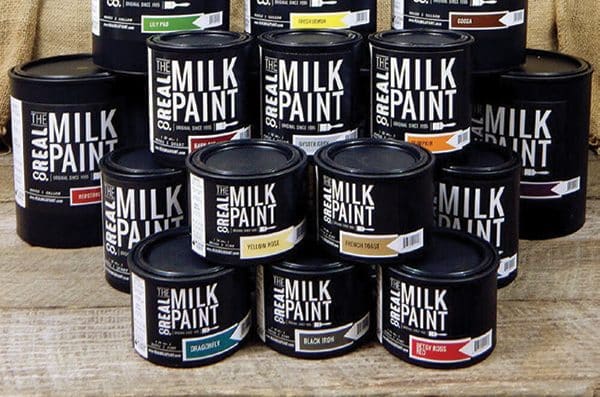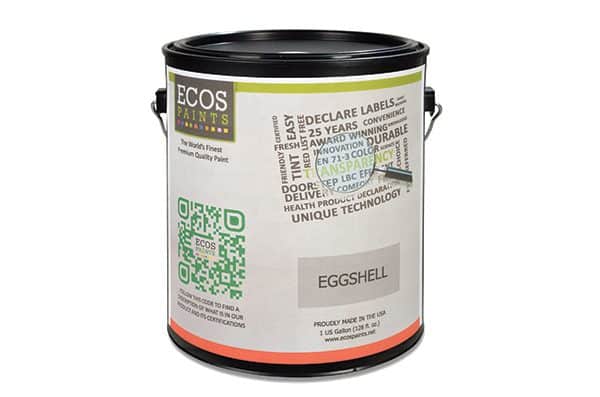Want to add some color to your walls or furniture? First, you gotta’ know what ingredients go into pet-safe paints. The cans most likely won’t be labeled “pet-safe,” so what should you look for instead?
“You’ll want a paint that contains no toxic chemicals or volatile organic compounds (VOCs),” said Arthur Emptage, IT consultant for Eco Paints, which creates pet-safe paints called ECOS Pet Paints. He also recommended looking for odor-free, water-based paint, which doesn’t produce the fumes that are bad for you and your dog. Also avoid paints that contain formaldehyde, toluene and/or polyurethane or say “zero VOCs.” If they contain any of those chemicals, they are not true zero VOCs, Emptage said.
Milk paints are pet-safe paints

Milk paint is a pet-safe paint that uses a milk base. Photography by The Real Milk Paint Co.
If you want to skip the label reading, look for milk paints instead. As the name suggests, these paints contain the milk protein, casein, lime and pigments. “Milk paint used to be used before acrylic and latex paints,” said Brian Welch, the sales and marketing manager for The Real Milk Paint Co. “Those paints have unnatural chemicals added to them to make them easier for someone to use and to keep them on the shelves longer. Our paints are all from the earth. There’s nothing that we put in our paints that you couldn’t find on your daily walk.”
Milk paint is water-based and, because of its ingredients, environmentally friendly and nontoxic. That means you won’t get any of those pesky fumes found in polyurethane paints, and it’s dog-safe.
There are some cons to milk paint: mainly its short shelf life, which can be as short as a day. That’s because milk paint comes in powdered form, and once you mix it with water, the clock is ticking. If you don’t use it within a certain time, it will congeal and be unusable. That’s why, when shopping for milk paints, look for mixes that can last longer than a day and that don’t congeal, Welch said.
The pros outweigh the cons, though: With milk paint, you know you and your dog are safe.
How to keep your wall paint clean and looking good
Once you get your paint on, it’s now time to keep your walls and furniture safe. Muddy, dirty dog fur is a bane to homes everywhere, so you want your paint to hold up to cleaning. Look for paints that have an “eggshell” or “satin” finish. These are great for stains and can be easily wiped clean.
With milk paints, Welch pointed out that they are porous and susceptible to water and need to be protected. “We have finishes, waxes and creams that create a waterproof finish and give your walls and furniture protection from wear and tear,” he explained. “The whole goal is to build up a ‘sacrificial’ layer, so if we did milk paint, an oil finish and wax finish over that, that’d be three different layers. As long as you maintain the wax layer, the two underneath will stay pristine.”
What paint colors to choose when you have dogs

Choose a color that’s slightly off white so that dog dirt and debris don’t show. Photography courtesy Eco Paints.
So what colors are great for dogs? Most people get off-whites or soft-whites over pure white with dogs in the home. However, Welch is all for bright colors and encourages people to use them. “Dogs bring a lot of positive energy to the home,” he said. “You should have a paint that matches that.”
Jessica Pineda is a freelance writer who lives in Northern California with her two German Shepherds, Forest and River.
The post How to Find Pet-Safe Paints That Aren’t Toxic to Your Dog appeared first on Dogster.
No comments:
Post a Comment